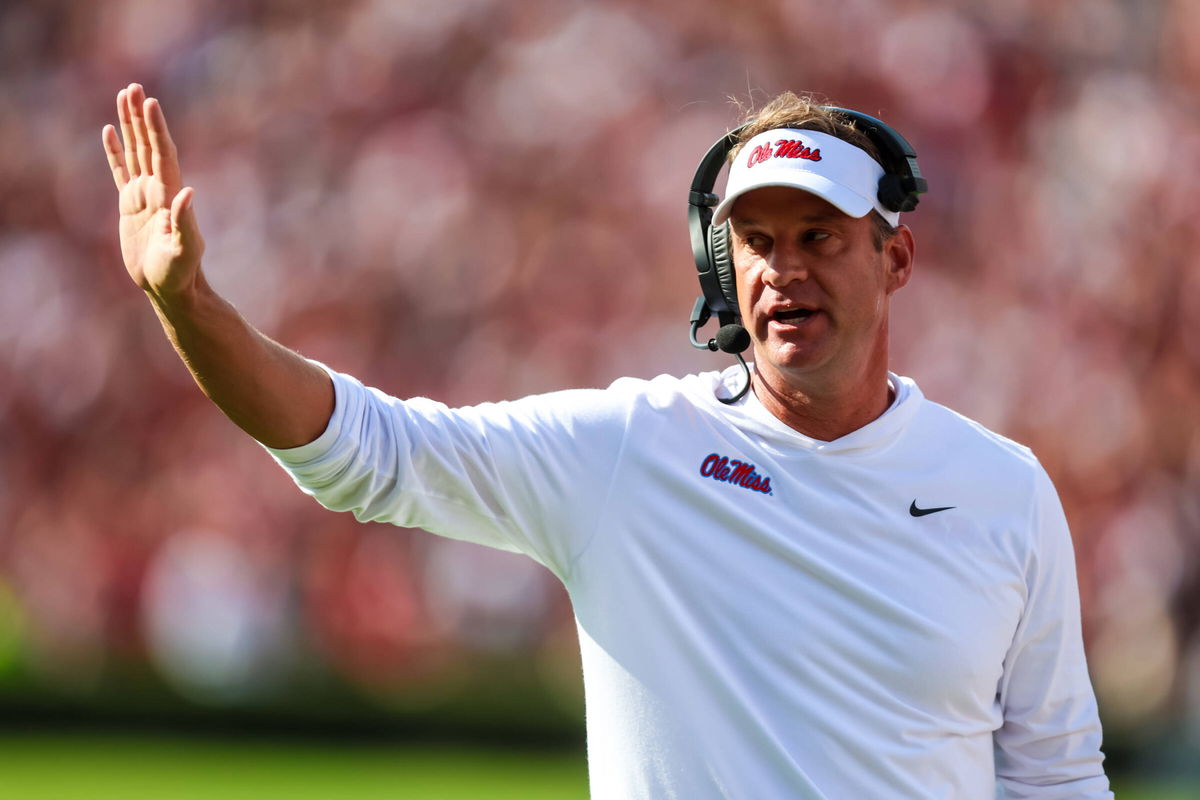
Imago
NCAA, College League, USA Football: Mississippi at South Carolina Oct 5, 2024 Columbia, South Carolina, USA Mississippi Rebels head coach Lane Kiffin directs his team against the South Carolina Gamecocks in the first quarter at Williams-Brice Stadium. Columbia Williams-Brice Stadium South Carolina USA, EDITORIAL USE ONLY PUBLICATIONxINxGERxSUIxAUTxONLY Copyright: xJeffxBlakex 20241005_tbs_ay3_257

Imago
NCAA, College League, USA Football: Mississippi at South Carolina Oct 5, 2024 Columbia, South Carolina, USA Mississippi Rebels head coach Lane Kiffin directs his team against the South Carolina Gamecocks in the first quarter at Williams-Brice Stadium. Columbia Williams-Brice Stadium South Carolina USA, EDITORIAL USE ONLY PUBLICATIONxINxGERxSUIxAUTxONLY Copyright: xJeffxBlakex 20241005_tbs_ay3_257
What’s the future of Lane Kiffin’s football program and Ole Miss’ sports in general? It’s a new age of college sports where multi-million dollar TV deals, NIL collectives, and now revenue sharing dominate headlines. Now, schools around the country are swinging the axe on non-revenue sports, trying to meet the demands of a $2.8 billion NCAA settlement. But amid the chaos that followed, Ole Miss is doing something rare, which is staying calm. The Rebels are holding steady, at least for now.
Watch What’s Trending Now!
On June 19, On3’s Jake Thompson made an interesting post on X regarding Ole Miss in the wake of the NCAA v House settlement. “Schools are making the tough choice to eliminate sports due to revenue sharing and cost-cutting. For Ole Miss this is a ‘break glass in case of emergency’ option.” He also added a quote by the Rebels athletic director, Keith Carter—“We’re nowhere close to that right now. It’s not even in the discussion.” In Oxford, the vibe is different.
Schools are still working through the new revenue streams to pay for the $20.5 million, as cost-cutting measures follow. Since the House v. NCAA bombshell dropped, the sports world has seen a slow bleed, with 32 Division I Olympic programs cut, St. Francis dropping to Division III entirely, and names like Louisiana Monroe and Washington State slashing sports like women’s tennis and track and field to stay afloat.
ADVERTISEMENT
The message is loud and clear, and it’s adapt or get left behind. But for Ole Miss, as the AD said, cutting any sports would be “our very last resort,” and “we’re nowhere close to that right now.”
Schools are making the tough choice to eliminate sports due to revenue sharing and cost-cutting. For Ole Miss this is a ‘break glass in case of emergency’ option.
“We’re nowhere close to that right now. It’s not even in the discussion.”
Story: https://t.co/JeLnuErUCc pic.twitter.com/GUyAQPqBsS
— Jake Thompson (@JakeThompsonOn3) June 19, 2025
Keith Carter confirmed in an interview with the Daily Journal that Ole Miss sports will receive revenue sharing across five departments—football, baseball, softball, men’s and women’s basketball. They’ll all receive a budget number that they can divide among themselves. “Obviously we’re competitive, and college athletics is a place where we’re going to always look for ways to find advantages,” he said. “And so that’s where I think that the third-party, true NIL opportunities are going to be the place where we now try to get very creative and try to bring on more sponsors and corporate members and those type of things. We’ll continue to work with the Grove Collective and Magnolia Sports Group to create true, authentic, NIL fair-market value deals for these student-athletes.” But for smaller sports, the outlook is murkier.
ADVERTISEMENT
Can Lane Kiffin and Ole Miss escape the era of hard choices?
For years, athletic directors warned that paying players would mean gutting Olympic sports. That prediction is quickly becoming reality because FBS schools still need to sponsor at least 16 sports, but many top programs carry 20 or more, leaving the extras vulnerable. Budget sheets don’t lie.
ADVERTISEMENT
Cal Poly’s diving teams are gone. Grand Canyon’s men’s volleyball is cut. UTEP axed women’s tennis, blaming the same thing as everyone else, which is “upcoming changes to college athletics, including revenue sharing and roster caps.”
Patrick Rishe, who runs Washington University’s sports business program, didn’t mince words. “There is going to be more competitive pressure on all universities to step up, or else they’ll fall behind,” he said. And if you’re not in the SEC or Big Ten, good luck.
Programs like Saint Francis have already tapped out, citing “pay-for-play” realities and the madness of trying to compete with multimillion-dollar payrolls. As coaching associations for volleyball, wrestling, and diving wrote in a joint statement, “This is no hypothetical. Budget cuts and program eliminations have already taken place in anticipation of today’s outcome, and more are likely to follow.” Even with the $20.5 million cap leveling the playing field, it’s still the third-party NIL deals, corporate sponsorships, and collectives like the Grove Collective and Magnolia Sports Group that will define which programs sink or swim.
ADVERTISEMENT
Ole Miss plans to navigate this next chapter with a mix of innovation and restraint, but there’s no ignoring what’s coming. Because in this new world of college sports, survival belongs to the strategic.
ADVERTISEMENT
ADVERTISEMENT
ADVERTISEMENT

